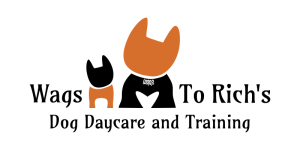Tips for Preventing Resource Guarding

Canine Communication Ladder:
You’ll most often hear this referred to as the Canine Ladder of Aggression, but what we’re really talking about is how dogs communicate. Therefore, I much prefer the name, as do other expert canine behaviorists: Canine Communication Ladder. What this shows is an escalating sequence of how a dog communicates to a human about his “thing.” If your dog engages in any of these sometimes scary and often embarrassing behaviors, you are not alone. Resource guarding communication is common among dogs, with estimates as high as half of all dogs demonstrating these specific communication behaviors to one degree or another during their lifetime.
What Causes Resource Guarding?
So, what happened to cause your dog to become so obsessed over something? Some of these obsessive behaviors are based on instinct, but the actual cause will be different for each dog. For example, a frightened dog will behave differently than a dog who is protective over the same object. My job is to help you figure out what caused your dog to feel and act the way he does over the object. Check out the following possible causes.
Lack of Socialization
When your dog hasn’t been exposed to other situations, people, or pets, he may show fearful or anxious behaviors, especially if he has been abused in the past or had multiple homes and no real security.
Possession
Do you think your dog “owns” you or someone else in your household? Dogs can become possessive over anything: a toy, their bed or crate, food, treats, and any gross but to them valuable thing they have scrounged up from your backyard.
Routine
Sometimes it appears “cute” when a dog covets a particular person, place, or thing. Or maybe it doesn’t seem like a big deal as the dog’s behavior isn’t hurting anyone or anything. If there’s one thing to remember, it’s that guarding behaviors are not cute. No matter how insignificant they may seem now, they are a big deal and can escalate into something dangerous, especially with larger dogs that are known to be more assertive in their communication style.
Boredom
Have you ever been bored out of your mind? If so, perhaps you remember how your mind threatened to get you in all sorts of trouble. Guess what? Dogs get bored, and dogs think, and dogs can find ways to busy themselves. Guess how?
Aggressive Play
Do you play with your dog? Do you play tug of war? Wrestling? Or another form of play where the ante increases and your dog’s communication style quickly climbs the escalation scale? Dial it back. Let your dog win those tug-of-war sessions. Convert the wrestling match to a relaxed petting session.
Resource guarding is the bane of many a dog owner and occurs when a dog decides a person, place, or thing is a treasure that is his and his alone. But frankly, rather than call it resource guarding, I prefer to refer to it as a dog’s communication style. When some other being, be it human, canine, feline, or something else, approaches a dog who has claimed his prize, communication behaviors ranging from running away with it to growling, to outright biting may occur.

When a dog has become attached to his prize, he communicates what he wants in the only way he knows how. Think if someone were to come along and try to take away something you treasure – -a car, a diamond ring, your Buffalo wing pizza, a bag of peanut M&Ms. Chances are, you’d have something definite to say about it. You’d probably have a veritable hissy fit. You’d communicate. When something threatens your dog’s precious person, place or thing, the only way he can communicate is by running away, growling, or biting.
Can it be Fixed?
The good news? YES! Resource guarding and its associated communication behavior can almost always be corrected and simply boils down to: Determining what caused the behavior Getting help from a professional behaviorist quickly Being consistent in using the techniques you learn when at home Treats, treats, treats

Getting Help from a Professional
Your dog’s “prize” can move from one person, place, or thing to another, so the goal is to catch the signs early to make training even easier. This is where I come in. I pride myself on using techniques that make dogs want to do something as opposed to having to do something. This means no electric shock collars, no chains around the neck, and no hitting or negative punishments. Think of it like this: in your human world, you work because you get paid. You would not work if you were constantly hit or punished and not paid. Yes, my techniques require more work, but your dog will modify his communication style – in a major way. When your dog starts showing undesirable behaviors, do call to either arrange for private home visits or enroll in a class specific to your dog’s needs and behaviors.
Being Consistent
Unfortunately, many of my clients don’t regularly practice the techniques I teach them. Without regular reinforcement, dogs will revert to the original, undesirable communication styles which means you are probably not happy with your dog’s behavior, and you just lost a lot of money.
Treats, Treats, Treats
Underlying everything I’ve talked about here, and will talk more about in the future, is the use of treats. Back to the money thing: wouldn’t you behave better if someone gave you a wad or money than if that same someone kept prodding you with a taser? Here’s the bottom line. When your dog gets a reward for not guarding the object, it will then become less and less important until at last – problem solved! Need I say more? The fact is, I will in future articles.

